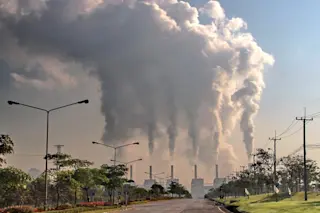(Credit: Ungnoi Lookjeab/shutterstock) Climate change is riddled with questions that have uncertain answers. How fast will Earth’s population grow? When will renewables become affordable enough to take over? How much carbon dioxide can the oceans suck up? But even with these uncertainties, researchers in a new study say it's clearer than ever that the actions society chooses to take today will dictate the climate for future generations. “They make clear our choices — in a world of uncertainties — our choices are the dominant [uncertainty],” said Robert Lempert, a policy expert at the RAND Corporation in Santa Monica, California, who was not involved in the research.
One of the major problems when estimating global climate change over the course of centuries, is that the future is unknown, says Jonathan Lamontagne, a systems analyst at Tufts University in Massachusetts, who led the new research. Analysts can't know what technologies will be ...














